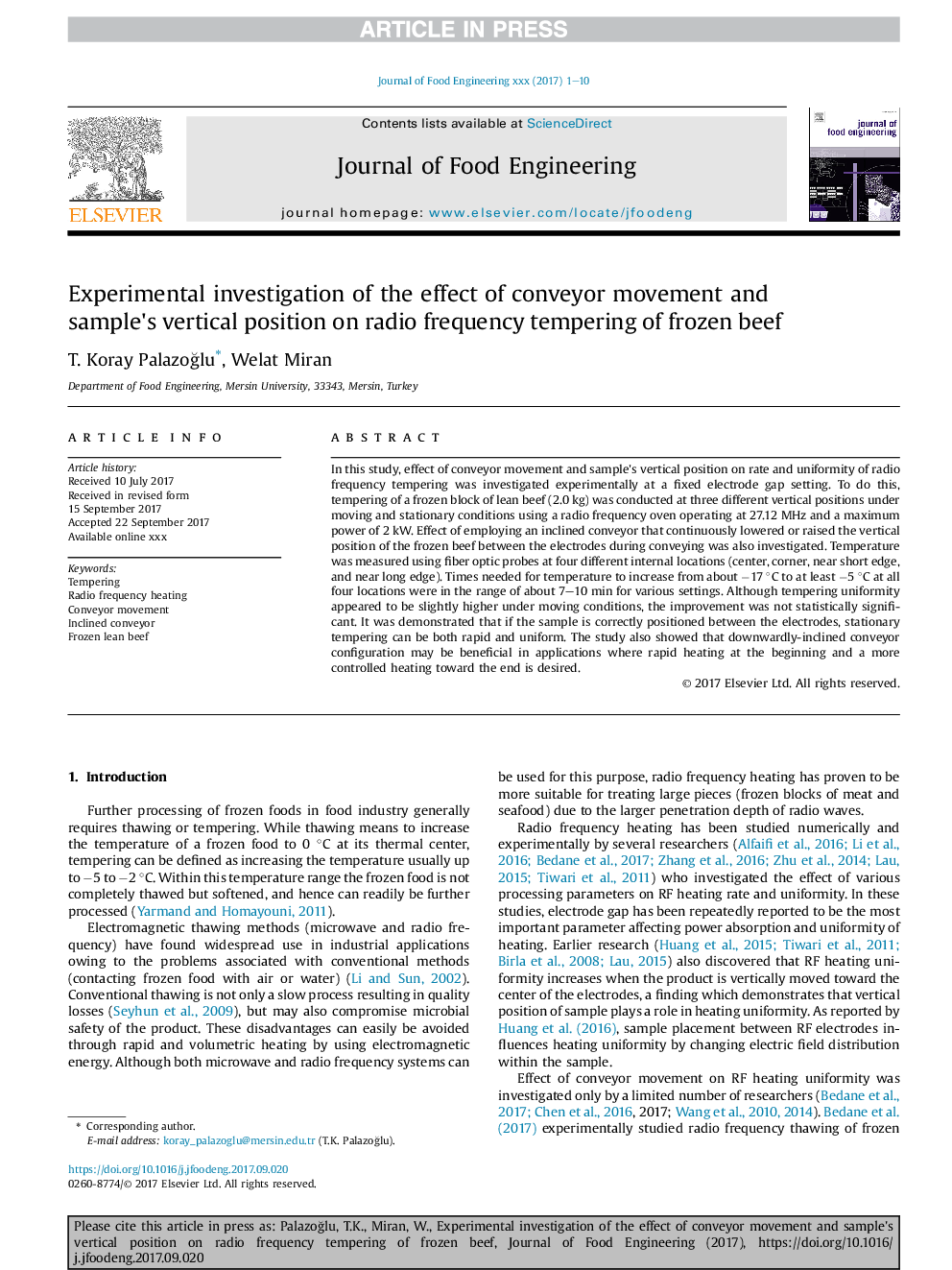| Article ID | Journal | Published Year | Pages | File Type |
|---|---|---|---|---|
| 6664852 | Journal of Food Engineering | 2018 | 10 Pages |
Abstract
In this study, effect of conveyor movement and sample's vertical position on rate and uniformity of radio frequency tempering was investigated experimentally at a fixed electrode gap setting. To do this, tempering of a frozen block of lean beef (2.0 kg) was conducted at three different vertical positions under moving and stationary conditions using a radio frequency oven operating at 27.12 MHz and a maximum power of 2 kW. Effect of employing an inclined conveyor that continuously lowered or raised the vertical position of the frozen beef between the electrodes during conveying was also investigated. Temperature was measured using fiber optic probes at four different internal locations (center, corner, near short edge, and near long edge). Times needed for temperature to increase from about â17 °C to at least â5 °C at all four locations were in the range of about 7-10 min for various settings. Although tempering uniformity appeared to be slightly higher under moving conditions, the improvement was not statistically significant. It was demonstrated that if the sample is correctly positioned between the electrodes, stationary tempering can be both rapid and uniform. The study also showed that downwardly-inclined conveyor configuration may be beneficial in applications where rapid heating at the beginning and a more controlled heating toward the end is desired.
Keywords
Related Topics
Physical Sciences and Engineering
Chemical Engineering
Chemical Engineering (General)
Authors
T. Koray PalazoÄlu, Welat Miran,
